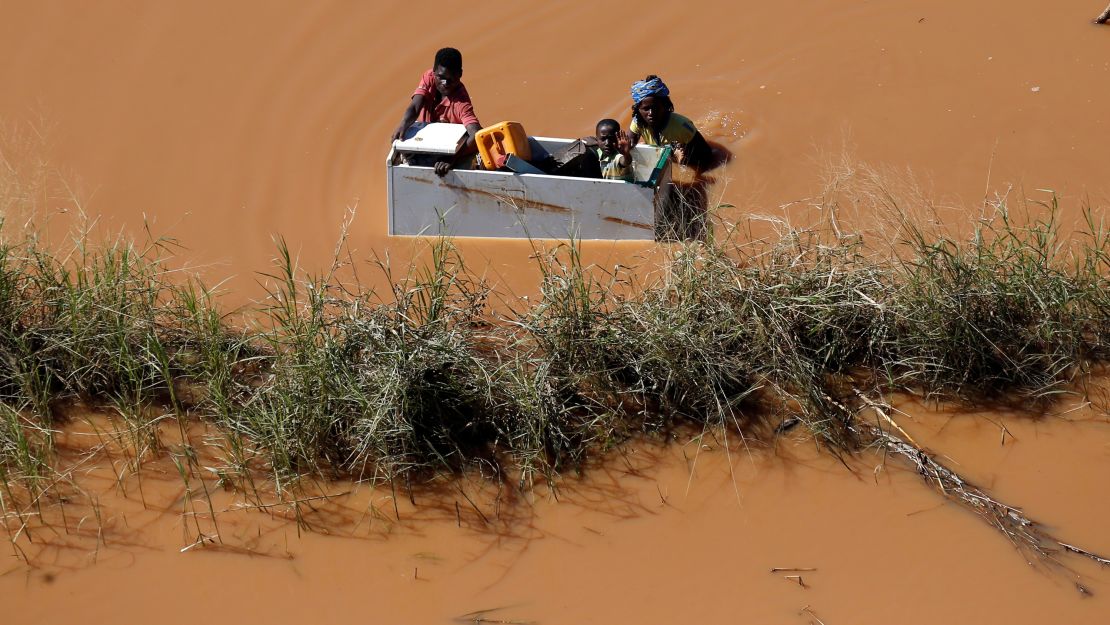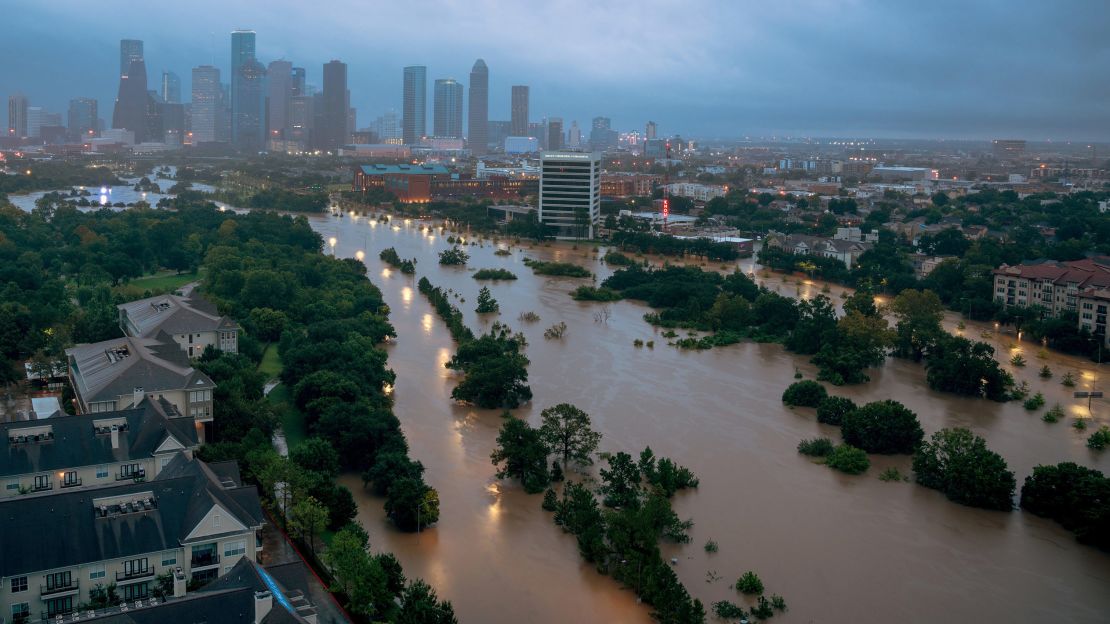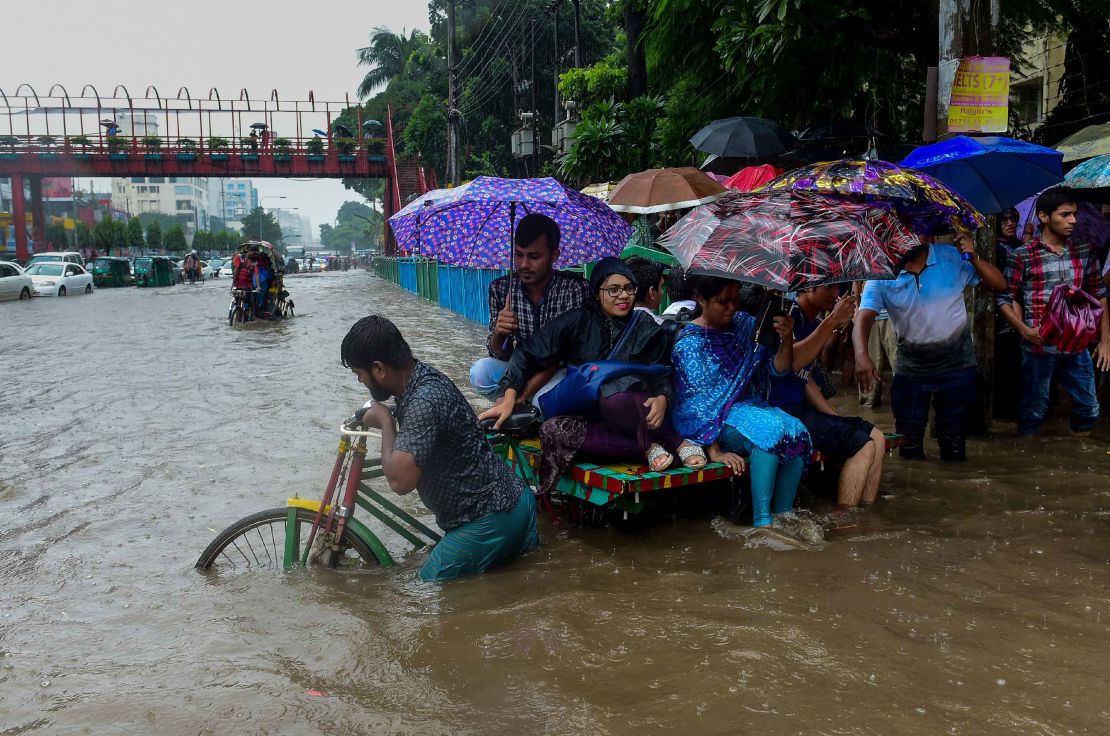“Upside down” are the only words Manush Albert Alben has to describe life after the powerful Cyclone Idai.
Nearly two weeks since the powerful cyclone destroyed most of the city of Beira, Mozambique, it is a long way from normal. “There’s no money, no groceries,” Alben, a fisherman, said while sitting in his wooden pirogue on a local beach. “We are suffering but trying to hold on.”
Known for its busy port and views of the Indian Ocean, the 19th-century city used to be the fourth largest in the country. Now Beira will go down in history as being “90% wiped out” by global warming, said Gra?a Machel, a former Mozambican freedom fighter, politician and deputy chair of The Elders, who spoke to CNN on the phone after visiting the city.
“This is one of the poorest places in the world, which is paying the price of climate change provoked mostly, not only but mostly, by the developed world,” the 73-year-old added.
Hundreds of square miles are covered by water, flooding an area so vast it can be seen from space. Only when the water recedes completely, says Machel, will Mozambique be able to count the bodies.

Cyclone Idai is only the latest extreme weather event to blight the region, affecting more than half a million people and filling humanitarian camps with tens of thousands.
The 2015-16 El Ni?o weather cycle, believed to be the strongest in 50 years, severely affected Southern Africa’s food security, according to the UN Food and Agriculture Organization (FAO). Dry weather conditions in large swathes of Zimbabwe, Malawi, Zambia, South Africa, Mozambique, Botswana, Lesotho, Swaziland, and Madagascar led to about 32 million people being unable to afford or resources to acquire food in 2016.
By 2018, drought, population growth and climate change nearly made Cape Town the first city in the world to run out of water.
“[Cyclone Idai] is a tragic showcase of what can happen in many other similarly situated towns and cities in low and middle income countries,” Denis McClean, spokesperson for the United Nations Office for Disaster Risk Reduction, told CNN. “They are vulnerable and they are exposed.”
The inequality of climate change
Climate change is often described as a problem that will affect future generations. But the world’s most vulnerable are already facing its devastating effects.
The United Nations estimates that 4.2 billion people have been hit by weather-related disasters in the last two decades, with low-income countries suffering the biggest losses.
Many of the world’s poorest live in equatorial regions, which already have high average temperatures. This means a tiny rise can be sharply felt and lead to harsher impacts, according to a 2018 study in Geophysical Research Letter.
Meanwhile, most of the world’s richest nations are the largest emission producers – by burning fossil fuels and modern farming practices that produce climate change causing emissions.
Using climate model projections, the paper found that if global average surface temperatures reached the 1.5 or 2 degree Celsius (3.6 degree Fahrenheit) limit – set by the Paris Agreement – countries like Indonesia or the Democratic Republic of the Congo would feel the changes brought on by global warming more keenly than higher latitude countries like the United Kingdom.
“The results are a stark example of the inequalities that come with global warming,” wrote the study’s lead author Andrew King, a climate researcher at the ARC Centre of Excellence for Climate Extremes and the University of Melbourne, Australia.
That is not to say that developed countries are immune to its effects.
Hurricane Harvey, a storm whose intensity was linked to climate change, caused biblical flooding in the summer of 2017 around Houston and surrounding counties. More than 120,000 people had to be evacuated or rescued, and about 80 people died.
And preliminary analysis by researchers at the Environmental Change Institute (ECI) at the School of Geography and Environment in Oxford University, found that Europe’s uncharacteristically hot and dry summer of 2018 was likely linked to climate change.

“Wealthy countries like the United States [are] able to prepare and cope with problems like climate change better than poorer countries,” Michael Oppenheimer, Princeton Professor of GeoScience and International Affairs, told CNN’s Christiane Amanpour.
In 2016, the US Department of Housing and Urban Development awarded $48.3 million to the state Louisiana to help with the climate relocation of the entire community on Isle de Jean Charles, which lost more than 97% of its land to the sea in the last 60 years.
“But in some places poorer countries have actually done a better job than the United States. Because for all our worth – or our wealth, we’ve been asleep at the wheel and that’s due to bad leadership in the federal government,” Oppenheimer said.
Infrastructure wrecked
Countries like Mozambique and Bangladesh, whose low-lying, densely populated coastal towns and cities are on the front lines of climate change, have agonized over the issue of a warming planet.
“It is quite clear that rising sea levels and warming seas contributes to the intensification of these weather events,” McClean told CNN.
Bangladesh, which saw at least 1,200 die and more than 41 million people affected by monsoon rains and flooding in 2017, is girding for a battle against climate change, Ricardo Safra de Campos, a Research Fellow at the College of Life and Environmental Sciences at the University of Exeter, told CNN.

The country has built anti-cyclone shelters, coastal embankments, and invested in a cyclone and flood warning prediction systems. However, its efforts are financially limited, adds Safra de Campos.
Beira, which lies below sea level, is no stranger to floods. Officials worried about the low lying city, which is filled with poorly planned settlements. It had flood defenses in place before Cyclone Idai hit.
According to the World Bank, funds were provided in 2012 to help the city build flood control stations, a large water retention basin, and the restoration of a storm drainage system and canals.
But the cyclone’s 175 kph (110 mph) winds and and accompanying rains laid waste to Beira’s defenses – ripping the foundations of bridges, bursting riverbanks and sweeping away homes.
Stronger storms
“High rates of poverty, a lack of resilient infrastructure, slums and a disappearance of protected infrastructure in low- and middle-income countries” create a cocktail of risk, said the UN’s McClean.
But cities, towns and villages may not stand a chance to withstand the scale and intensity of extreme weather events, which have “more or less doubled in the last 40 years,” he said.
When Super Typhoon Haiyan, which turned into a Category 5 hurricane from the warming waters in the ocean, struck the Philippines in 2013 it became one of the strongest tropical storms in history.
Filipinos had never seen anything like it, McClean said. The people in the coastal city of Tacloban could not even describe the seven-meter tidal surge that came with the storm.

“They simply did not have words to explain what was happening to them,” he said.
While it is too early to gauge the magnitude of Cyclone Idai, the UN World Meteorological Organization projects the disaster could be among the worst weather-related disasters in the southern hemisphere.
The UN’s Economic Commission for Africa estimates that Mozambique, Zimbabwe, and Malawi, may have lost $1 billion of infrastructure in the cyclone.
“They lost everything, including the references of their past and cultural heritage,” Machel added. “Everything is washed away….[but] the social fabric is the one which will be extremely difficult to reconstruct,” even when the roads are re-paved, she said.
As events in Mozambique, Bangladesh and the Philippines have shown, climate change is a problem of the present. Not just the future.
With reporting from CNN’s Anna Cardovillis in Mozambique and Duarte Mendonca in London.

